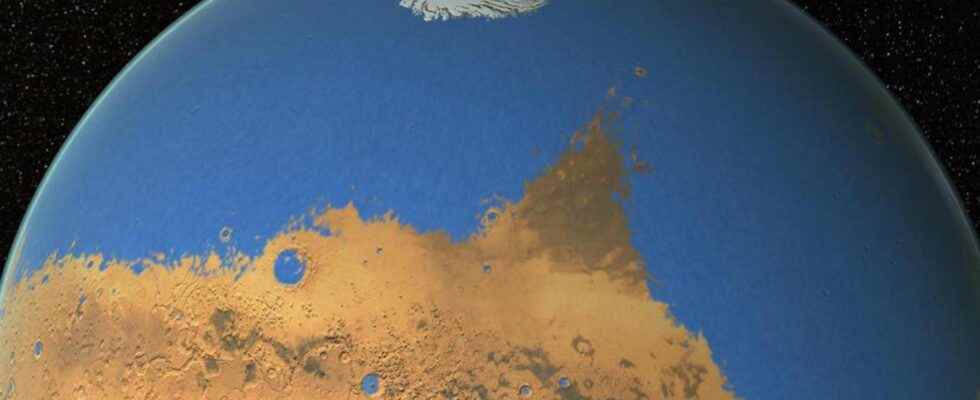Somewhere in its past, Mars experienced dramatic climate change. Switching it from a hot and humid environment to the cold and dry environment that we know today. Astronomers have long pointed the finger at carbon dioxide (CO2). They now consider that another component of the atmosphere may have played a much more important role.
You will also be interested
[EN VIDÉO] 15 things to know about Mars While 3 missions are currently on their way to Mars, we invite you to learn a little more about the red planet. Here are 15 things to know about Mars.
Today, Mars seems to have become a desert cold and dry. But some 3.5 billion years ago – or a little more – its atmosphere was hot enough for liquid water to flow across the surface of the planet. In 1972, it was the Mariner 9 mission that for the first time revealed Martian landscapes studded with ancient riverbeds. Over the decades, researchers have accumulated the evidence that confirms this. Yet they still do not know what caused this transition.
It is generally agreed that the depletion of the Martian atmosphere in carbon dioxide (CO2) could have caused this spectacular drying of the red planet. However, University of Chicago researchers (USA) suggest that the transition from a hot, humid planet to a cold, dry planet could be the result of the loss of another component of the atmosphere. Which ? The question remains.
The researchers studied thousands of photos returned by the many missions launched to Mars these last years. They analyzed how riverbeds overlap and how they are altered. All to reconstruct the river history of the Red Planet over the past billions of years. With the idea of combining these analyzes with simulations of climatic conditions. To finally determine which correspond best to the observations made by the machines that have flown over Mars.
Better target habitable planets
It was in the process that the researchers realized that a change in the amount of CO2 – a powerful greenhouse gas, we know only too well – in the Martian atmosphere did not sufficiently vary the climatic conditions of the Red Planet. In other words, CO2 does not seem to be the main driver of the wet/dry transition that has occurred on Mars. Another major factor would have intervened. “We do not know what this factor is, but it must exist in large quantities to explain the results »says Edwin Kite, a geophysicist at the University of Chicago, in a communicated.
It seems that there are several alternative solutions. The first of these is the one proposed by the same researchers last year. The presence of a layer of clouds thin and icy high in Mars’ atmosphere that would have trapped heat. Other scientists have suggested that hydrogen released from within the planet may have once interacted with CO2 into the atmosphere to absorb the infrared light and warm the planet.
the Perseverance rover, which currently roams the ground of the Red Planet, could provide additional clues that would at least help eliminate some hypotheses. As researchers know, for a planet, maintaining stable conditions – and favorable to life – for millions, even billions of years, is not easy. And solving the mystery of Mars drying up could ultimately allow them to better target potentially habitable exoplanets.
Interested in what you just read?
